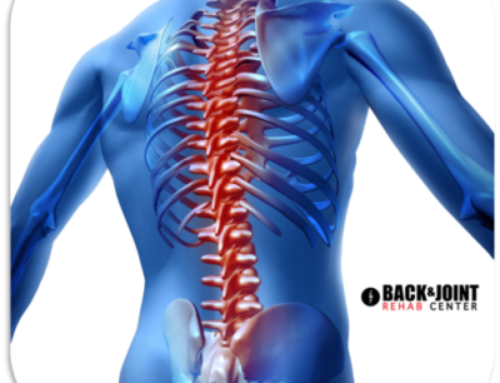According to the National Institute of Health, on average, Americans spend more than half of their waking hours in a seated posture. Sitting is a universal activity that is present much throughout our day. Sitting during breakfast, car rides, at work, at school, during lunch, at home studying, at home in front of the TV, during dinner, and the list continues. It is estimated that Americans,12 years or older, spend about 8-10 hours a day sitting. As we get older, we tend to spend a greater time sitting.
Do We Sit Too Much?
The sedentary behavior has been linked to many health problems, particularly, our physical health. While standing and walking may seem as similar sedentary behaviors, our body does not perceive them to be similar. As you stand and walk, your brain is continuously sending messages and responses interpreting the resistance of gravity. Your muscles are contracting, maintaining balance, and shifting weight, using muscles to move which also loads and unloads your joints.
When you are up and active, you are utilizing a wide range of bodily systems increasing heart rate, blood flow, oxygen, and hormone changes such as epinephrine and endorphin. Sitting results in the complete opposite which gradually leads to low levels of physical activity. The summation of how long we sit, has side effects that we view as opposition to our health.
Some of the common areas of physical pain as we sit are most notably our head, neck or low back. When we sit, our hips bend, therefore reflecting an associated amount of low back bending. If the low back bends, the head protrudes forward.
 The forward head position places strain on the neck and head, the longer time spent seated in this posture, the greater the strain builds. Imagine holding a cup of water with an outreached arm. Initially, the cup of water is not difficult to maintain outreached; however, the longer you hold the cup, the fatigue begins to grow leading to symptoms of discomfort or pain. The same applies to tension that develops in the neck or head. The longer the forward head posture is held in sitting, the fatigue begins to develop leading to tension, tightness, and at times pain. The summation of sitting in this posture may lead to pain in the neck, headache, shoulder blade, arm, forearm, or hands. It can also progress to having tingling, numbness, or weakness in the arms & hands.
The forward head position places strain on the neck and head, the longer time spent seated in this posture, the greater the strain builds. Imagine holding a cup of water with an outreached arm. Initially, the cup of water is not difficult to maintain outreached; however, the longer you hold the cup, the fatigue begins to grow leading to symptoms of discomfort or pain. The same applies to tension that develops in the neck or head. The longer the forward head posture is held in sitting, the fatigue begins to develop leading to tension, tightness, and at times pain. The summation of sitting in this posture may lead to pain in the neck, headache, shoulder blade, arm, forearm, or hands. It can also progress to having tingling, numbness, or weakness in the arms & hands.
The low back is being placed in a forward bent, slouched position that behaves the same as the neck. The tension of passively sitting in a slouched posture leads to fatigue in which develops to tension, tightness, and symptoms of pain or discomfort. In similar fashion, the low back can produce pain to spread into the butt, thigh, lower leg, or foot accompanied with or without tingling, pins & needles, numbness, or weakness.
Majority of the time, pain with the head, neck, or low back present for no apparent reason. Patients report having performed a typical activity that is done on a regular basis; however, this time it produced pain. They report saying things such as, “I slept funny”, “I got out of the chair funny”, “I reached over”, “I bent over”, “I turned to see”, and the common phrases patients report consistently demonstrate pain provoked during activities they perform regularly and daily.
It is no surprise pain develops from performing daily activities without trauma. The accumulation of postural influences and repetitive activities gradually affects mobility, flexibility, motor control, and strength.
Is Sitting Bad?
No. Sitting is not bad. Prolonged sitting, lack of full range movement, and lack of physical activity lead to negative outcomes with our physical health. In particularly, our spine suffers the most because as we sit, the weight bearing begins on our butt and transfers all the way through the spine to the head.
Good posture is a loose term because majority of people understand that slouched posture is bad for you. However, an over-correction of posture is also bad for you. Imagine squeezing both of your bicep muscles as hard as you can; now hold that contraction all day. By the end of the day, you’ve developed discomfort or pain because of the prolonged contraction. The same occurs when people who over exaggerate “an upright posture up”.
Note the difference in the two postures. The first is a slouched posture and the second is the over-correction of the upright posture. Both postures are not meant to be long lasting, however, an individual should be able to maintain some time in either position without experiencing pain. Although, if there is already pain present, sitting altogether may be painful and intolerable.

The best advice regarding sitting posture is to stand up and move every 30 minutes. However, that is challenging because we all have work responsibilities and are not presented with the opportunity to stand and move every 30 minutes. The recommended posture is to have support and utilize the equipment around as you sit to allow you to feel relaxed in the seated posture without slouching or being overactive in the upright position.
A general recommendation for most individuals would be the following:
- Place your feet on the ground
- Have your butt touch the back of the chair
- Position a lumbar roll in the low back above the waist line
- Have your shoulder rest on the back of the chair
Observe how the head is positioned over the shoulders and in line with the rest of the spine similar to a plumb line. For most people, this posture will be sufficient. For some, this posture may be “too much”, therefore remove the lumbar roll and sit without the support using the same instructions. Understanding what you specifically need as an individual for best posture is better than knowing a general rule of thumb.
Seated posture is important and it is important to know what posture reflects your body type. The more you move throughout the day, the better. If you have to sit for a prolonged period of time learn which type of sitting is best for you.
If you or someone you know struggles with Headaches, Neck or Low Back Pain. Please share this article.
DEDICATED TO GET YOU BETTER THROUGH MOVEMENT
We are here to help. For appointments, call (219)-310-8822
Dr. Artemio Del Real DC, Cert. MDT, CSCS





